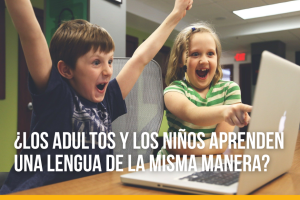By: Lucia Rodriguez.
Language is a powerful tool beyond communication; it shapes our thoughts, emotions, and perceptions. One of the most influential sources of language exposure for a child is his mother. The linguistic environment a child experiences during their early years plays a crucial role in shaping their cognitive and emotional development. This article explores the profound relationship between a mother’s language and how it is perceived by her child.
Early Language Exposure:
A mother is often the primary caregiver, and as such, her language becomes the foundation for a child’s linguistic development. Babies are remarkably receptive to the sounds of their mother’s voice even before birth. Studies suggest that fetuses can distinguish their mother’s voice from other sounds, laying the groundwork for language recognition.
Cultural Identity and Belonging:
A mother’s language carries not only linguistic nuances but also cultural elements. It becomes a vehicle for transmitting cultural heritage, traditions, and values. The language spoken at home contributes to a child’s sense of identity and belonging within their cultural context. The connection between language and cultural identity is a key factor in shaping a child’s worldview.
Emotional Bonding Through Language:
Beyond the linguistic aspects, the emotional tone embedded in a mother’s language significantly impacts a child’s emotional development. Positive and nurturing language fosters a secure attachment, contributing to a child’s emotional well-being. Conversely, harsh or negative language can have lasting effects on a child’s self-esteem and emotional resilience.
Language as a Mirror:
A mother’s language reflects societal norms, attitudes, and values. Children often internalize these linguistic cues, using them as a framework for understanding the world. The choice of words, expressions, and idioms becomes a mirror through which a child perceives societal expectations and norms, influencing their cognitive and social development.
Bilingual and Multilingual Dynamics:
In an increasingly globalized world, many children grow up in multilingual environments. The dynamics of language choice and code-switching within a family offer a unique perspective on adaptation and cognitive flexibility. The ability to navigate multiple languages is a valuable skill that enhances cognitive abilities and cultural adaptability.
Educational Implications:
A strong foundation in the language spoken at home positively correlates with academic success. Children who are proficient in their mother tongue often exhibit enhanced cognitive abilities, better communication skills, and a smoother transition to additional languages learned in formal education settings.
We call Mother Tongue our native original language, not in vain. A mother’s language is a multifaceted influence on a child’s development, encompassing linguistic, cultural, and emotional dimensions. Recognizing the significance of this relationship allows us to appreciate the role of language not just as a means of communication but as a fundamental building block in the complex tapestry of human development. As we delve into the intricacies of the mother-child linguistic bond, we gain insight into the profound impact language has on shaping the minds and hearts of the next generation.


